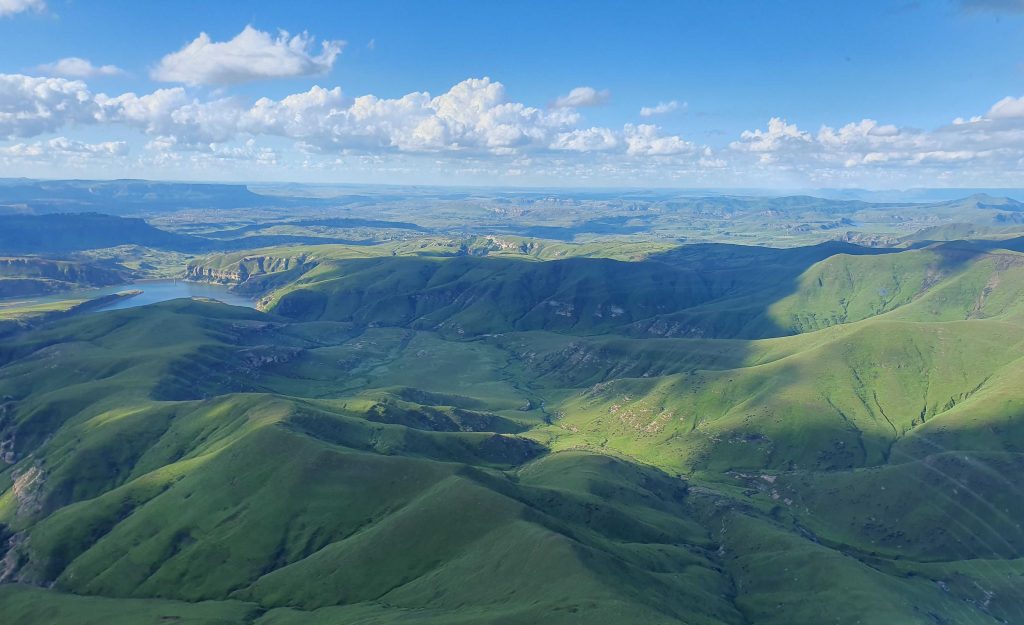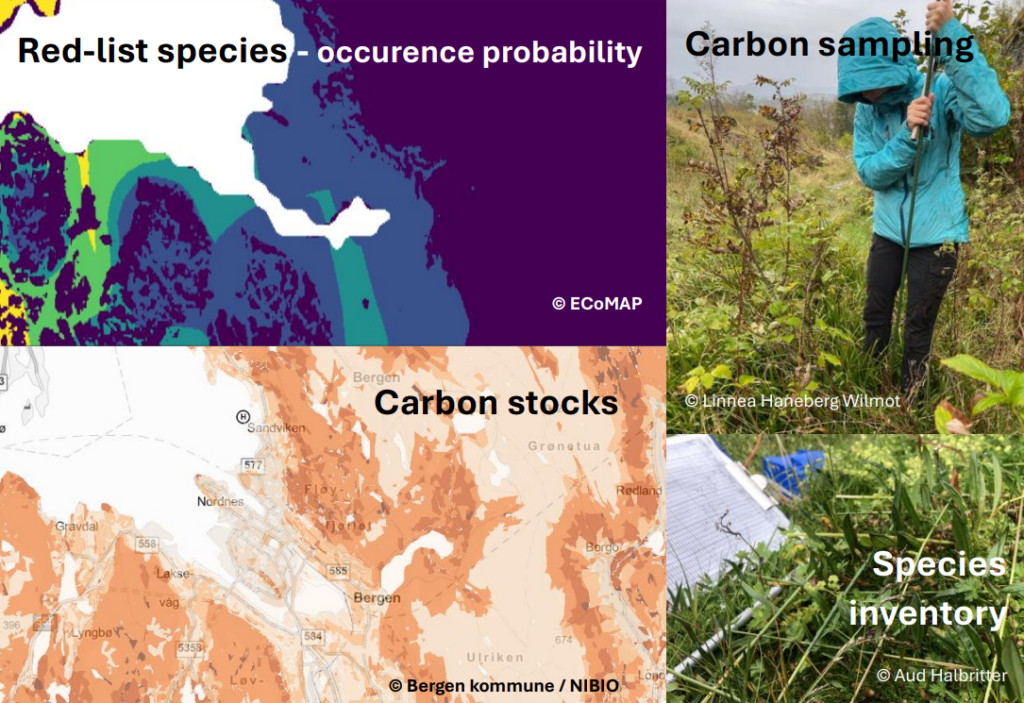In order to do your Master's thesis with us, you need to be registered as a student at the course BIO399 - Master's Thesis in Biology. This course is worth 60 ECTS. A Master's thesis comprises approximately a year's work, which includes designing and carrying out your own research project as writing up the results in a thesis. These Master's theses are primarily intended for students studying biology at the University of Bergen, but we welcome exchange students through the Erasmus network.
Doing your master's at Between the Fjords
- The BTF lab believes in learning by doing, and we therefore take great care to make any MSc project that we offer a real research experience.
- Our research is overwhelmingly collaborative, and so should your MSc be. The thesis projects we offer are therefore primarily linked to our ongoing research projects. This offers a number of advantages: The projects offer large amounts of background data, your research can be part of a bigger picture, we can support your research with funding, and field work and data management can be done in collaboration.
- We will support and supervise our MSc students in all aspects of their research; from study design and planning via field and lab work to data management, analyses, writing, and presentation.
- We have a data management, ownership, and publication rights policy that our students will be covered by.
- We will ensure that MSc projects are publishable, and will support our MSc students in publishing their work, either as a first author in collaboration with other group members.
- We encourage and support out students in presenting their work at scientific conferences.
- We are open for students from other institutions who would like to do their thesis research in our field systems or projects. If you are interested, please contact us.
Suggested thesis topics
MSc thesis: The role of belowground fungi in the carbon cycle

Background Belowground fungi are key players in the decomposition of plant litter, and therefore in regulating the carbon cycle. Despite their importance, we still know relatively little about how these fungi respond to climate change, and how such responses, in turn, influence decomposition rates across Norway. Using cutting-edge molecular approaches, such as metabarcoding, we can identify the diverse fungal species involved in decomposition. By linking this fungal diversity to measured degradation rates across different climates, we can better understand the connections between climate, fungi, and carbon cycling. Through this project, you will: Gain hands-on experience with advanced molecular techniques (short-read metabarcoding) for environmental DNA monitoring. Learn and apply bioinformatic tools to analyze complex metabarcoding datasets. Be part of the vibrant Between the Fjords research group in Bergen, with opportunities to collaborate with the Oslo Mycology group Supervisor Mika Helene Kirkhus | UiB
MSc thesis: opportunities in the NatuRA Project

Background Mountain grassland ecosystems support a wide range of ecosystem functions and services, including provisioning services via grazing pastures for wild and domesticated herbivores, supporting services, especially clean water and carbon sequestration, and cultural services through supporting traditional livelihoods. World wide, alpine ecosystems have traditionally been managed as communal rangelands inhabited by indigenous people and local communities (IPLC) who depend on sustainable management of their natural resources, for example through pastoralism. Alpine ecosystems and the people living in them and depending on them are now threatened by multiple global change drivers including land-use change, climate change, pollution, and invasive alien species. Because traditional livelihoods in mountain systems world wide have developed under similar sets of environmental constraints (alpine climates, low productivity, steep elevation gradients), their traditional land-use systems share broad similarities (e.g., sustainably managing extensive grazing resources, water resources). Our working hypothesis is that these similarities offer opportunities for comparative approaches across mountain regions globally to assess more generally how to mitigate global change impacts on mountain grasslands and sustainably manage these resources in the future. NaturRA leverages long-term research collaborations and collects new data in two globally important social- ecological systems in the mountains of Norway and South Africa. The overarching objective of the NatuRA project is to generate new knowledge on how mountain grassland ecosystems and their natural resources have been traditionally and are currently managed, how they are now affected by global changes and changes in management practices, and then use this knowledge to co-develop nature-based solutions with local stakeholders to sustainably safeguard these social-ecological systems and livelihoods under global change. Opportunities for master students The rangelands of the northern Maloti-Drakensberg mountains in South Africa (ZA) and Lesotho, and the trans-humance-based grazing systems in the fjord landscapes of Western Norway are based on traditional extensive land-use practices on communal rangelands, dating back centuries. They are now rapidly changing due to technological, economic, demographic, and cultural changes, resulting in both intensification or abandonment of traditional land-use systems. We want to get a better understanding of natural resources such as grazing as well as biodiversity along elevational gradients in mountain grasslands in South Africa and Norway. The work includes fieldwork both in Norway and South Africa, collecting ecological data related to grazing and biodiversity in grassland vegetation. Potential ideas are: Assess plant productivity, grazing pressure, and forage quality along an elevational gradient Study plant functional grazing traits along an elevational gradient Survey invertebrates diversity along an elevational gradient, potential indicators for ecosystem health Supervisor Aud Halbritter: aud.halbritter@uib.no
MSc thesis opportunities in project DURIN

Background Dwarf-shrubs (Ericaceae) are a dominant plant functional group across the boreal, arctic, and alpine biomes, where they play important roles for biodiversity, ecology and ecosystem functioning. For example, dwarf-shrubs provide important food resources for grazers, pollinators, and people, they are habitat for other plants, insects, rodents, and birds, and through interactions with belowground fungal networks (ericoid mychorriza), they play critical roles in carbon sequestration and long-term carbon storage in soils. Despite their broad climatic and geographic ranges and dominant roles across boreal, arctic, and alpine vegetation zones, dwarf-shrub can be quite sensitive to climate changes and climate variability, as shown by their key roles in ‘arctic greening’ and ‘arctic browning’ events. This suggests that dwarf-shrubs may play a critical role in both the responses and the feedbacks between terrestrial ecosystems and the climate system. DURIN will explore the role of dwarf-shrubs in climate responses and feedbacks across biomes and habitats, integrating plant physiology, ecology, ecosystem, and climate science. Using distributed observational systems, field experiments, and growth chamber studies; we will obtain fundamental knowledge on how climate change directly and indirectly affects this important plant functional group, and it’s ecosystem functions and services. This improved process understanding will be integrated in land surface and earth system models to understand the role and contribution of dwarf-shrubs in the feedbacks from terrestrial vegetation to the climate system. Supervisors Sonya Geange Sonya.Geange@uib.no Kristine Bikeli Kristine.Birkeli@uib.no Mika Kirkhus Mika.Kirkhus@uib.no
MSc thesis: Disentangling drivers of plant population establishment after range expansion (RangeX)

Background Due to climate warming, plant species are shifting their ranges, trying to track their climatic niches. This can for example be displayed by range expansions or upward shifts of plants from lower elevations. Changes in community composition are occurring with novel lowland species invading into the alpine ecosystem. The RangeX project is an upslope translocation field and lab experiment, aiming to understand range shifts in mountains across ecologically contrasting regions (Norway, Switzerland, South Africa and China). We want to investigate the establishment, growth and reproduction of ten focal lowland species in novel climatic conditions with and without competition. RangeX works at two field sites in Norway near Voss, one lowland and one montane grassland. In 2021, lowland plants have been transplanted beyond their current range limits to higher elevations. We have chosen species that vary in their functional traits but share similar habitat requirements. The goal of this experiment is to disentangle the two factors warming and competition by using open top chambers (OTCs) and a removal treatment of the native vegetation. Opportunities for master students Germination experiment in the lab and / or in the field: How successful are lowland plants in establishing under different climatic conditions, with and without competitors/facilitators? Seedling measurements: Seedling growth traits Physiology measurements (thermotolerance, hydraulics, stomata density) Physiology measurements on adult plants after five years in the field: Thermotolerance, hydraulics, stomata density Native community: Vegetation analysis of native species How much of the total resources can lowland and native species exploit? Belowground: Root traits How much are lowland plant species investing into belowground biomass? We have more detailed descriptions of some of the projects on the website, but if you have questions about the projects or other ideas, feel free to contact us! Supervisors Nadine Arzt, nadine.arzt@uib.no, Sonya Geange, sonya.geange@uib.no Vigdis Vandvik, vigdis.vandvik@uib.no
Master theses related to the project ECOBUDGETS

Topic Ground truthing of biodiversity maps for nature accounting Summary In the face of nature loss at the scales we are witnessing today, nature accounting and budgeting starts receiving increased focus. At the basis of such accounts are the physical properties of nature: the extent and the condition of ecosystems. To create a physical nature account, especially at local spatial scales, full area covering map information is needed. Biodiversity- and other nature-related maps are often based on models and/or remote sensing, and thus carry a certain amount of uncertainty. An important approach to both test available maps and improve them is validation and ground truthing. The ECOBUDGETS project seeks to develop nature accounts and budgets for Bergen, which offers opportunities for master theses focusing on validation and ground-truthing of modelled and/or remote-sensing based maps. The theses would span from the design of data collection, via field work, and to validation of maps of the chosen target variables. Examples for target variables/maps are species inventories, alien species, pollination services, or carbon stocks. Veiledere Hanif Kawousi, (UiB, hanif.kawousi@uib.no) Vigdis Vandvik (UiB, vigdis.vandvik@uib.no),Joachim Töpper (NINA, joachim.topper@nina.no)
MSc thesis: Plant community responses to the direct and indirect effects of climate in the Vestland Climate grid

Background Alpine grasslands are vulnerable to climate change, and are currently changing rapidly in both plant functional group dominance (1) and species distributions (2). These biotic shifts contribute to indirect effect of climate change through influencing biotic interactions (3,4). Indeed, research is still needed on the effect of climate on long-term vegetation dynamics (5). Our research group uses a macro-ecological experimental approach to quantify the impacts of climate and biotic interactions on biodiversity and ecosystem functioning of alpine grasslands across factorial broad-scale temperature and precipitation gradients in Norway (the Vestland climate Grid). For example, Althuizen et al. (2018) studied the impact of long-term climate regime on decomposition in alpine grassland soils (6). The FUNDER project Climate change alters not only plants, but also soil communities, and thus interactions across the plant-soil food web. These interlinked changes pose threats to biodiversity and key ecosystem processes and functions, such as carbon and nutrient cycling, and ecosystem productivity. The FunCab project, using a long-term plant functional group removal experiment (fully factorial removals of grasses, forbs and bryophytes, maintained since 2015) in semi-natural grassland replicated across the 12 sites of the Vestland Climate Grid, studied the direct and indirect impact of climate on plant communities. The new project, FUNDER, pursues the work done on FunCab integrating data of the belowground part in order to better understand the impact of climate on the plant-soil food web. The FUNDER project thus continues and expands this research to assess and disentangle the direct effects of climate from the indirect effects, mediated through biotic interactions, on the diversity and functioning of the plant−soil food web. The objectives are to disentangle direct and indirect climate impacts of three major plant functional types in grasslands – grasses, forbs and bryophytes – on plants, soil nematodes and microarthropods, and microbes, and ecosystem processes. We aim to better understand landscape variation and whole-ecosystem consequences of indirect climate impacts as well as climate feedbacks of the plant-soil food web. Thesis proposal This MSc thesis will be conducted as part of the FUNDER project, where the MSc student will have responsibility for assessing plant community responses to the direct and indirect effects of climate. The successful candidate will continue a time-series of plant species composition once a year from 2015 to 2019 in the removal experiments described above. This will complete a unique dataset on the plant community composition in response to climate and plant functional group manipulation over 8 years. The MSc student will identify plant species during the last fieldwork campaign on this experiment before the destructive harvesting for soil sampling planned for the FUNDER project in 2022, which in collaboration with the work carried out by the rest of the FUNDER team will allow comparisons and linkages between plant, animal, and microbial responses. The MSc thesis will explore how the biomass, biodiversity and functional composition three plant functional groups in grasslands respond to changes in climate and biotic interactions. Research questions How does the biodiversity and functioning of grasses, forbs, and bryophytes in alpine grasslands vary along broad-scale climate gradients? Are the responses of these major plant functional groups to climate influenced or modified by biotic interactions among them? Is there a temporal shift in plant species composition and biotic interactions? You will be part of a dynamic research team, gather experience in scientific approach and have amazing fieldwork experience in fjords and mountains in Western Norway. Tasks 3-5 weeks of fieldwork, identifying species and analyzing plant community composition Data management, reproducibility and Open Science practice Statistical analyses using R Share your results: write a theisis which can be published as a scientific paper, and present your work in national/international conferences Candidate requirement Global change ecology background Plant species identification skills, knowledge of Norwegian flora is an advantage Statistical and data management skills Scientific writing skill Team spirit Enjoy hiking in mountains and being outside under both sunny and rainy weather Practical information The project is funded through research grants Start: July 2022 Place of work: University of Bergen Supervisor: Vigdis Vandvik and Morgane Demeaux. To apply, send your CV and motivation letter to morgane.demeaux@uib.no before 15th of May 2022. References (1) Engemann, K., B. Sandel, B. J. Enquist, P. M. Jørgensen, N. Kraft, A. Marcuse-Kubitza, B. McGill, et al. 2016. ‘Patterns and Drivers of Plant Functional Group Dominance across the Western Hemisphere: A Macroecological Re-Assessment Based on a Massive Botanical Dataset’. Botanical Journal of the Linnean Society 180 (2): 141–60. https://doi.org/10.1111/boj.12362. (2) Kelly, A. E., and M. L. Goulden. 2008. ‘Rapid Shifts in Plant Distribution with Recent Climate Change’. Proceedings of the National Academy of Sciences 105 (33): 11823–26. https://doi.org/10.1073/pnas.0802891105. (3) Jaroszynska, F. 2019. ‘Climate and Biotic Interactions – Drivers of Plant Community Structure and Ecosystem Functioning in Alpine Grasslands’. University of Bergen. (4) Vandvik V, Klanderud K, Skarpaas O, Telford RJ, Halbritter AH & Goldberg DE. 2020. Biotic rescaling reveals importance of species interactions for variation in biodiversity responses to climate change. PNAS 17 (37): 22858-22865. doi: 10.1073/pnas.2003377117 (5) Afuye, G. A., A. M. Kalumba, and I. R. Orimoloye. 2021. ‘Characterisation of Vegetation Response to Climate Change: A Review’. Sustainability 13 (13): 7265. https://doi.org/10.3390/su13137265. (6) Althuizen IHJ, Lee H, Sarneel J & Vandvik V. 2018. Long-term climate regime modulates the impact of short-term climate variability on decomposition in alpine grassland soils. Ecosystems 21: 1580-1592. doi: 10.1007/s10021-018-0241-5
